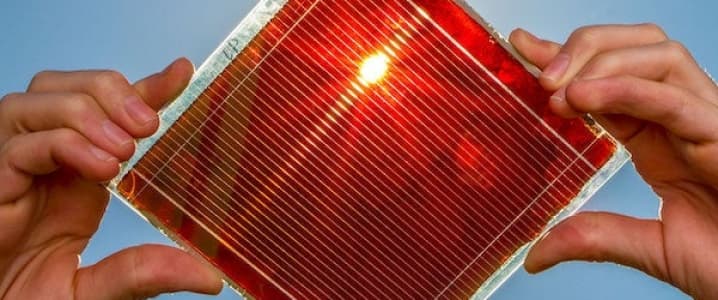Silicon has been to the solar power industry—not to mention the IT industry—what oil has been for the car industry: an essential element without which there would not have been an industry. Yet now there are challengers to the material that may turn out to be more efficient and one day replace it.
Perovskites are a group of materials that have the same mineral structure as the original perovskite, a mineral discovered in the 19th century. These materials are not new to solar power research. They have some quite attractive properties that make for enhanced panel efficiency at a lower cost than silicon. Now, an international team of scientists have made a step further down the perovskite solar road.
In a paper published in Science, the team reported on the testing of a perovskite compound, CsPbI3, that has demonstrated higher efficiency in solar power generation than comparable materials.
The Institution of Mechanical Engineers quoted one of the authors of the study as saying "We are pleased with results suggesting that CsPbI3 can compete with industry-leading materials. From this preliminary result we will now work on boosting the material's stability – and commercial prospects."
Indeed, stability happens to be a problem for perovskite materials when solar power generation is a concern. As Imeche explains, CsPbI3 is often studied in its alpha phase, a well-known configuration of the crystal structure appropriately known as the dark phase because of its black colour. This phase is particularly good at absorbing sunlight. Unfortunately, it is also unstable – and the structure rapidly degrades into a yellowish form, less able to absorb sunlight.”
It was this second phase—the yellow phase—that the team focused on in this study. Specifically, they focused on the cracks that appear in thin-film perovskite solar cells during this phase in a bid to remove them as an obstacle to the electricity flow. They used a chemical to do that, choline iodide solution, and found that in addition to removing the cracks, the compound also improved generation efficiency, from 15 to 18 percent. Related: Venezuela Plans Oil Production Boost Amid Worsening Crisis
The discovery follows on the heels of another one, made by researchers from KU Leuven university in Belgium. That team found a way to make the perovskite stay in its black phase by sticking it to a glass sheet and heating that to 330 degrees Celsius to make the perovskite atoms stick to the surface. Once they are stuck to the glass, the perovskite atoms can’t move and form the yellow phase of the mineral.
"There are three pillars that determine the quality of solar cells: price, stability, and performance. Perovskites score high on performance and price, but their stability is still a major issue," said study author Dr. Julian Steele, adding the researchers used the same type of perovskite as the authors of the international study, which happens to be one of the highest-performing but most unstable variations of the material. The results, therefore, should be applicable to other unstable perovskites.
All this work is taking place in the lab at present, but perovskites are certainly promising alternatives to the silicon solar cell. Solar power is getting cheaper as materials become cheaper, but as silicon-based solar technology is mature, it has little space to improve further. Emerging technologies such as perovskite solar cells, on the other hand, have a lot of space for improvement. Whether all these potential improvements will materialize, however, remains to be seen.
By Irina Slav for Oilprice.com
More Top Reads From Oilprice.com:
- Is This The Key To Commercial Nuclear Fusion?
- Gloomy Oil Markets Just Got Gloomier
- Germany’s Big Bet On Hydrogen


















